Oceans
How about an ultra-maritime board game for a change? And about going back in time some billions of years? How about playing evolution in Earth’s early Oceans.
The first impression one gets of the game is that the artwork is simply stunning. The box gives it away, and it continues like that. (Yes, I have the German version.)
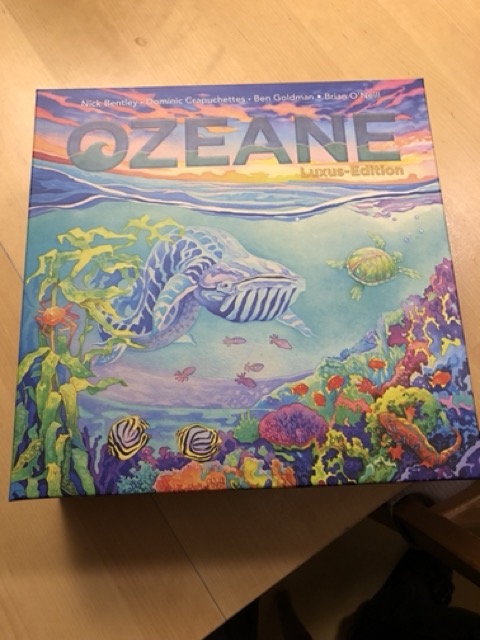
The game is an evolution simulation. Each player is in charge of one or more species that, to put it mildly, compete for evolutionary niches (or domination of the ecosystem) by, to put it slightly less mildly, eating one another all the time. Food and population size are each represented by little colourful cardboard fish that move from deeper levels of the ocean to the reef, where the show is on.
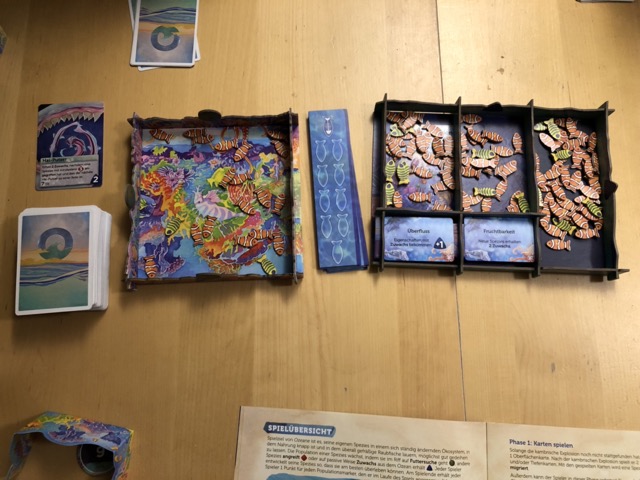
The above image shows the reef to the left, and the three ocean levels on the right. The first two ocean levels have cards that enable new situations in the game as soon as the respective level is emptied. The first ocean level also has a card at the bottom that is unlocked once the level empties, and represents the cambrian explosion, considerably speeding up the game and changing the dynamics once unlocked.
The image furthermore shows, to the far left, a huge stack of cards that represent traits of species. These include, for example, tentacles for more efficient food gathering, special predator capabilities for yet more efficient food gathering, parasitic behaviour for sneaky food gathering, transparency for avoiding to end up as the object of other species' food gathering activities, and so forth. You can see it’s all about food.
In the middle of the image, you can see a stack of oblong paper slips. Each of these represents a species, and the little fish fields, if filled with fish, represent the population size. Once the fishbone field is populated, the species' population is reduced due to overpopulation. (Needless to say, some of the trait cards avoid that.)
Species are assembled from the aforementioned trait cards. Each species can have up to three traits (unless the card unlocks more). These make for rather interesting combinations.
Here’s a photo of an in-game situation. There are three players, each of whom have three species (there is no limit to those, and players can start species whenever they wish). The species are arranged in a circle, with neighbours to the left and the right. Those neighbourhoods, and the proximity to certain other species, play a role. Essentially, this models an ecosystem.
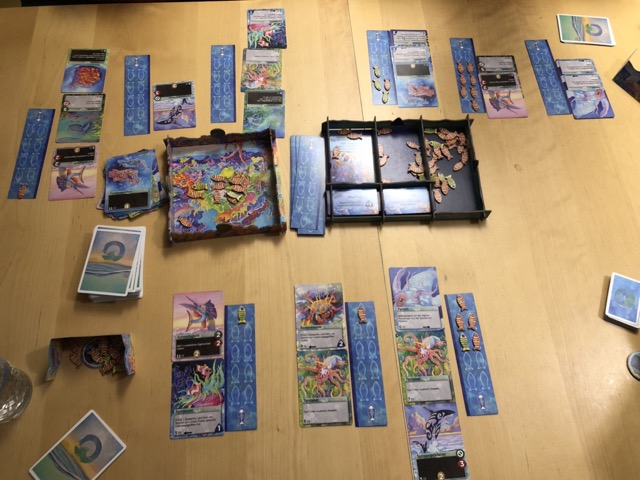
Because of the many interdependencies that naturally occur in an ecosystem, the species can develop a complex dynamic, making the game rather fun to play. Upon every move, some actions will be triggered that may trigger yet more actions. A species is attacked by a predator? Nice, the nearest scavenger species gets their share. Ooh, even better, their neighbouring species also gets something because they’re parasites. And so on.
Here are two species that ... evolved during this game. (Behold the artwork!)
First, meet the greedy parasite whale neighbour nobody likes. This species will always scrounge population from both its neighbouring species, putting both of these in perpetual danger of going extinct, and it can’t suffer from overpopulation.
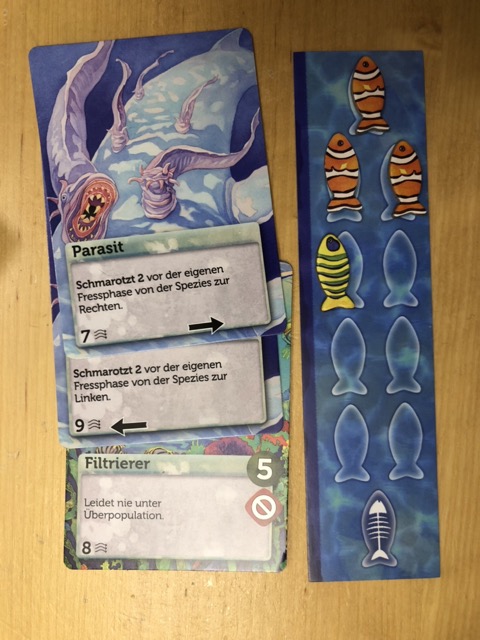
And here's the biggest jerk in the ocean: a parasitic tentacle-ridden super predator. Get out of its way or be eaten. Or be eaten anyway.
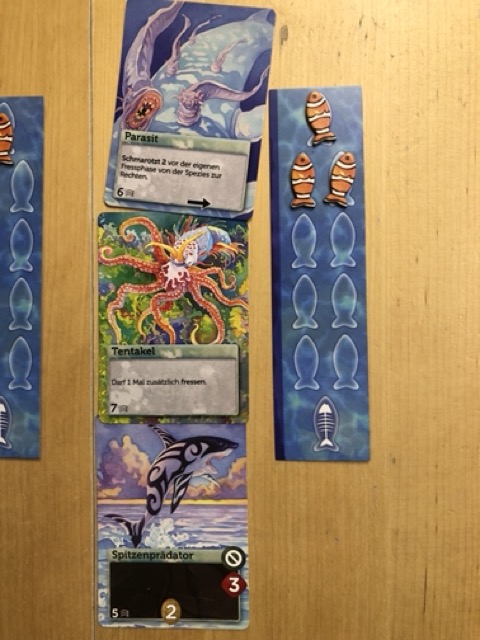
I haven’t explained much about the gameplay - it’s a simple round-based scheme: play cards, have your species do their thing (i.e., eat), let them age (i.e., remove some population), replace cards in your hand. Playing a card represents a step in evolution: a species develops a new trait. After the cambrian explosion, everyone gets to play two cards instead of one, speeding up evolution, and aging doubles as well, speeding up extinction.
The fun is in spawning and fostering species, and in sometimes letting go of some of them in a controlled way (unless when they’re eaten out of existence). It pays off to be a bit strategic by paying attention to where the whales and predators are (certain kinds of scavengers can use them). It’s also important to note that all species of all players interact.
Once you start playing with the “deep sea” cards (not shown here), things get really interesting: each of these 120 cards is unique, and many enable the nastiest jerk moves.
This game is wonderful. It’s so much fun to build the ecosystem “machine” and see its dynamics unfold. Really warm recommendation for anyone who likes engine builder games.
Tags: games